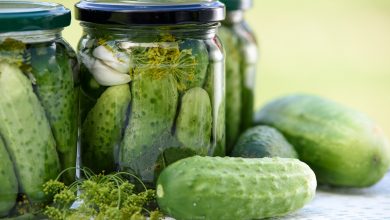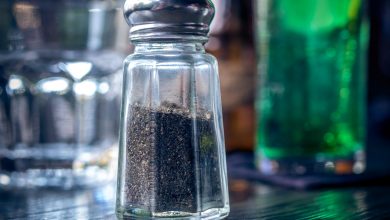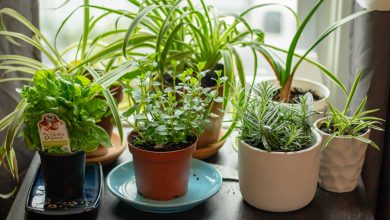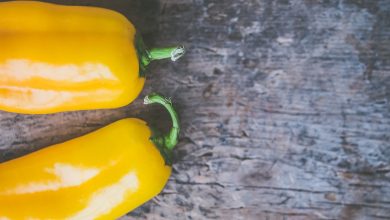How to Grow and Use Lemongrass
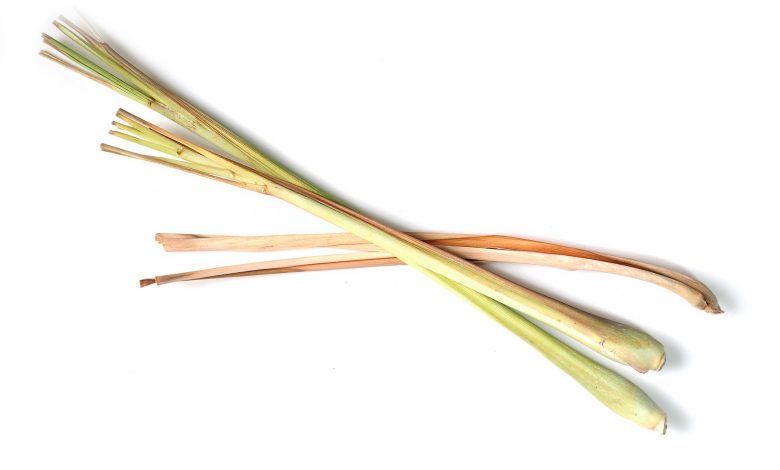
Lemongrass is a tropical plant that adds a distinct citrus flavor to food and drinks. One of the most popular uses of lemongrass is in Asian dishes and herbal teas. Recently, lemongrass has become a popular ingredient to use in cocktail recipes. Below, we’ll cover everything you need to know about growing lemongrass and provide recipes for using it in your kitchen.
What is Lemongrass?
Lemongrass is an herb that closely resembles a scallion in its look and length. The flavor of lemongrass is nothing like a traditional green onion though, as it has a distinct lemony scent and taste.
The herb is created from the lemongrass plant known as Cymbopogon citratus and can be used both fresh or dried. To maintain the most distinct citrus flavor, you should aim to use your lemongrass fresh. However, it can be used effectively as a dried herb in soups or in a slow cooker where it will be able to re-hydrate.
Beyond being a fine addition to many dishes and drinks, lemongrass has an appealing look when it’s fully grown. At full height, lemongrass typically grows between three and five feet tall. Rivaling the look of many ornamental grasses, lemongrass provides the unique combination of secret weapon in the kitchen and landscape beautifier.

How to Grow Lemongrass
Lemongrass is generally simple to grow and care for. But as a plant with tropical origins, it will not survive through a cold winter. Lemongrass grows most effectively if you can mimic its native tropical climate. That means lots of heat, sun, and moisture. With these elements in place, your lemongrass should quickly grow to maturity.
Begin by planting in the spring after you are certain that the final frost has come and gone.
Sunlight
As a tropical plant, lemongrass loves to soak up the sun’s rays as much as possible. Plant in an area that gets full sun. The area should receive at least six hours of sunlight each day.
Water
Water lemongrass daily if the top layer of soil has become dry. Try to keep the moisture level of the soil consistent. By adding a layer of mulch to the top of the soil, water can be retained more efficiently.
Soil
Lemongrass prefers rich and loamy soil. To achieve this, having a compost bin ready can help immensely by adding compost to the soil mixture. The soil you plant lemongrass in should be well-draining with a neutral pH level of around 6.5 to 7.0 pH.
Fertilizer and Feeding
As with most grassy plants, lemongrass prefers a nitrogen-rich soil. Fertilization is not necessary for lemongrass if your soil is already rich in nitrogen, but if not, look for a slow-release 6-4-0 fertilizer to use during the growing season.
Temperature
Once the nights are consistently in the 60s, it’s time to plant your lemongrass. With its tropical origins, lemongrass can handle plenty of heat, but it is not a drought-tolerant plant. If your climate is experiencing periods of high heat without accompanying rain, additional watering may be necessary to ensure the soil remains damp.
Toxicity
Unfortunately, lemongrass has proven to cause upset stomachs in cats and dogs, so you should keep this plant away from pets. Horses have also experienced difficulty breathing after ingesting.
Pests
Dry brown spots on your plants is a sign of rust fungus, which will kill your lemongrass over time. The rust fungus can form in wet conditions, so to prevent it from attacking your plant, water at the soil level rather than overhead.
Propagation
Lemongrass can be propagated using the division technique. The plant grows in lumps that are simple to divide, as each leaf is connected to a narrow bulb with roots hanging from the bottom. Each of these leaves has the chance to become a new growing clump of lemongrass, so it’s up to you how much of the clump you want to divide.
Harvesting
Lemongrass plants can handle harvesting even at young ages, so as soon as a stalk is large enough to your liking, you can harvest it for use in the kitchen. The green leaves are too tough to be edible, so remove the outer green leaves until you only have a white stalk. The stalk is used most effectively when minced or mashed.

Lemongrass Uses and Recipes
With its light but tangy and somewhat-gingery flavor, lemongrass is a versatile and nuanced addition to most dishes.
Vietnamese Lemongrass Chicken
This Vietnamese lemongrass chicken recipe involves making a lemongrass-based marinade that can be used on a variety of foods if chicken isn’t your thing. The recipe also involves blending all of the ingredients together, which makes for simple preparation and saves you the step of chopping up the stalks.
Ingredients
- One pound of chicken (or beef, pork, shrimp, tofu, etc.)
- Two tablespoons of any neutral-flavored oil
- Peeled cloves of garlic to taste (the more the merrier in my opinion)
- One medium shallot (or a quarter cup of a different onion)
- Two tablespoons of soy sauce
- Two tablespoons of fish sauce
- Two tablespoons of brown sugar (maple syrup can be substituted)
- One fresh-squeezed lime (save some for adding to the chicken after it’s been cooked)
- Two large lemongrass stalks
Additional ingredients you can add:
- One teaspoon of fresh ginger or ginger powder
- One teaspoon of crushed red pepper flakes (or more if you like it spicy)
Instructions
- Make the Marinade – Preparing the marinade is as simple as adding all the ingredients and blending them up together. If you don’t have a blender or food processor handy, you’ll need to dice up the garlic, shallot, and lemongrass.
- Marinate the Chicken – With a large bowl or zip-lock bag, add the chicken to the marinade at least 30 minutes before cooking. Depending on your preferred cooking method, you can cut the chicken into bite-sized pieces for skewers on the grill or leave the chicken as it is.
- Cook the Chicken – No matter how you cook the chicken, it should be 165 degrees Fahrenheit before serving. Let the chicken sit for a few minutes after removing from the heat source. Try to flatten the chicken to a universal thickness to allow for even cooking.
- Grilled Chicken – Over medium-high heat, grill chicken for seven to eight minutes per side.
- Baked Chicken – Set the oven to 400 and cook for 20-25 minutes. Remove when chicken is just above 160 degrees, as the internal temperature will rise as it sits.

Lemongrass, Lime & Thai Basil Mojito
Ingredients
- Two lemongrass stalks
- Quarter cup of sugar for syrup plus two teaspoons for serving
- Two limes sliced into eight wedges
- Handful of fresh Thai basil
- Eight ounces of white rum
- Club soda to top it off
- Ice to serve
Instructions
- Make the Lemongrass Syrup – Chop the lemongrass stalks into one-inch pieces and mash them with a mortar and pestle. Put them in a pot with one cup of water and the quarter cup of sugar. Bring to a boil then simmer for two minutes. Turn off the heat and let the syrup infuse for at least two hours but up to 24 hours in the refrigerator.
- Strain the Syrup – Press down on the lemongrass stalks to squeeze out every last drop of flavor and strain the syrup. The syrup will keep in your refrigerator for up to two weeks.
- Muddle the Lime and Basil – Take four glasses and place one-half teaspoon of sugar in each. Evenly distribute the Thai basil to each glass and add one slice of lime. Muddle it all together.
- Make the Cocktails – Take two ounces of rum and two ounces of lemongrass syrup and add to each glass. Top off with ice cubes and club soda to taste.
Lemongrass Gin and Tonic
Ingredients
- One cup of gin (per four servings)
- One medium lime peel
- Two lemongrass stalks
- One-half medium lime
- Three ounces tonic water
Instructions
- Make the Lemongrass Gin – In a jar or container, add one cup of gin, lime peel, and two chopped up lemongrass stalks. Shake well and place in a warm dark place for at least 24 hours.
- Make the Cocktails – Combine the juice of half a lime with two ounces of the lemongrass gin and three ounces of tonic water. Add ice and serve.
Lemongrass Tea
While you can’t use the outer leaves of lemongrass in food recipes, it’s the perfect way to making a refreshing tea. Here’s a simple recipe you can make in ten minutes and can serve either hot or cold.
Ingredients
- Four cups of water
- Two cups of roughly chopped lemongrass leaves
- Quarter cup of sugar
Instructions
- Boil water in a medium pan
- Add chopped lemongrass and boil for five minutes
- Reduce to a simmer for five more minutes
- Strain the liquid to remove the lemongrass and add sugar until it dissolves
- Serve hot or chill in the refrigerator and pour over ice
